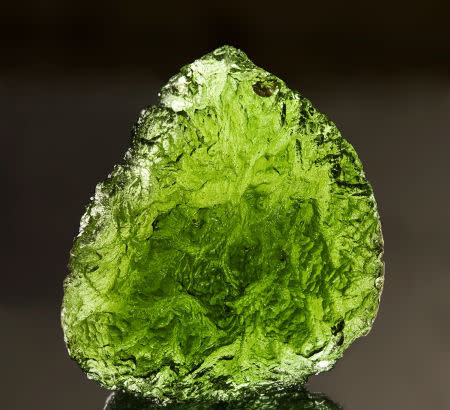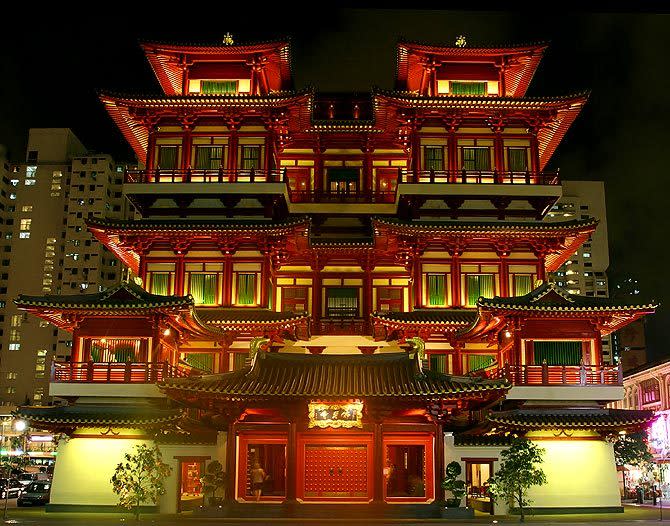5 mysterious mythological objects in Asia
Kubo and the Two Strings opened in cinemas earlier this month, and has already been unanimously heralded as one of the most beautiful stop motion movies of all time.
With touching storyline and memorable characters, the movie has also garnered incredibly positive reviews by critics and moviegoers alike. The film tells the story of Kubo, who goes on an adventure to save his hometown and unravel the mystery behind his father’s disappearance.
Kubo battles gods and monsters, and does all this with the aid of his magical two-stringed shamisen.
In Japanese culture and history, the shamisen is a typically three-stringed lute, and is a poignant part of the country’s ancient mythology. Similarly throughout Asia, there have been a vast array of mythological objects that have piqued our interests for centuries.
Cintamani Stone

Photo: Sirius Star
The Cintamani Stone is a legendary artefact which has roots in Buddhist and Hindu mythology.
Said to be the Asian equivalent of the western Philosopher’s Stone and Holy Grail, the Cintamani Stone is believed to have first fell from the heavens, along with three other mythical relics.
According to the legend, the Stone possesses extraordinary power to grant wishes, manifest great treasures, cure diseases, and even gifts immortality.
The Stone (and different versions of its origin story) were also heavily featured in modern pop culture pieces, such as “Dragon Ball” and popular video game “Uncharted 2″.
Here’s another fun fact: Bali’s mountainous region of Kintamani was actually named after the Cintamani Stone!
It is said that the Stone now resides in the mystical, hidden city of Shambala, which is theoretically located somewhere in the vicinity of Bali and the Philippines.
Buddha Tooth Relic

Photo: Flickr
When the founder of Buddhism, Gautama Buddha, passed away in 543 BC, his body was placed in a sandalwood pyre as a final rite of passage.
It was there after the cremation, according to Sri Lankan legends, that one of his disciples came across Buddha’s left canine tooth amid the ashes.
The tooth relic was handed over to the royal family for safekeeping and veneration.
It was also believed that whoever held the tooth in his possession had the inherent and divine right to rule.
Today, several monasteries and temples across the world (in in China, Japan, Taiwan, and even California, for example) are reputedly safeguarding the artefact.
One such place closer to home is the Buddha Tooth Relic Temple in Chinatown, Singapore, where the relic is on display for public viewing.
Kusanagi

An artist’s impression of the Kusanagi (left), alongside two other Japanese imperial regalia.
Japanese legends speak of a legendary sword, the Kusanagi-no-Tsurugi, which is purportedly one of the three sacred imperial treasures of Japan.
Ancient folklore depicts the Kusangi being extracted from the tail of a terrifying eight-headed serpent, which was subdued by the exiled god Susanoo.
The Kusangi is also dubbed the “Sword of the Gathering Clouds of Heaven” and “Grass-Cutting Sword”, and was bestowed upon the imperial family by deities centuries ago.
Today the sword is allegedly safeguarded at Atsuta Shrine in Nagoya, but no one alive has been able to verify its existence.
The Shinto priests who dwell in the sanctuary keep the relic under a strict watch, refusing entry to any visitors, so much so that not even the Emperor of Japan has seen the relic.
During the Edo period, a handful of priests supposedly laid eyes on the sword while performing repair works at the shrine.
However, they were promptly banished from the temple… and all but one died of mysterious causes soon after.
Keris Taming Sari

The Keris Taming Sari, pictured third from left in this 1907 photo amidst other Perak royal regalia.
Ask any Malaysian about their country’s greatest warrior, and they will immediately tell you his name: Hang Tuah.
This legendary warrior lived in Malacca in the late 15th century, and won a slew of epic battles with the help of his one chosen weapon - the Keris Taming Sari.
A keris is a traditional Malay dagger, typically used as a weapon or for ceremonial purposes.
What sets the famous Keris Taming Sari apart was that it was supposedly made up of 21 different metals, and blessed with magical powers that would make its user invincible.
Hang Tuah’s mysterious disappearance in the latter part of his life led to rumours that he had flung the keris into the depths of the Malacca river, stating that he would return once the keris reappeared.
The truth, however, was that the dagger changed hands multiple times over the centuries, and now rests peacefully in the home of Perak Sultan Azlan Shah.
Dropa Stones

Photo: ZME Science
This last item on the list is one from relatively modern times.
During an excavation of Chinese caves in 1938, archaeologists discovered peculiar stone disks hidden beneath layers of dust and dirt - 716 disks in total, to be exact.
Each of these disks bore a striking resemblance to what is known today as a phonograph (or vinyl record).
The only catch: these disks were more than 12,000 years old, and definitely were not records (which were only invented in the late 1800s).
Close examination of the records showed tiny hieroglyphics on the surface of the stone disks, which when translated expressed amazing stories of spaceships and an extraterrestrial race, the Dropa, who crash landed on earth.
Sounds like a tall tale? No one knows for sure as the existence of these stones were never properly verified, and some believe the entire story is merely a big hoax.


